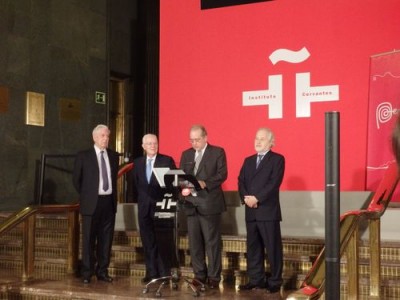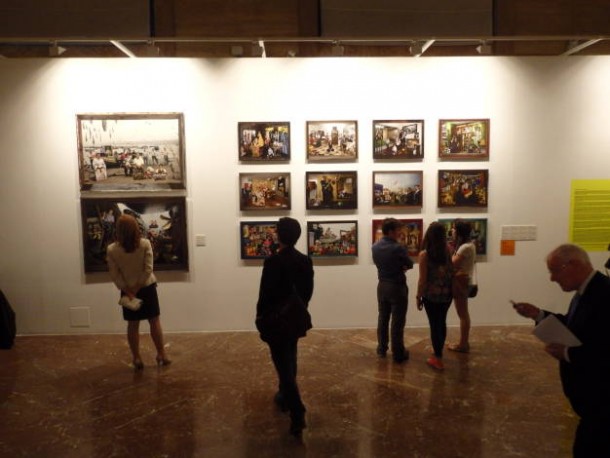MADRID, SPAIN. Nearly nine million people inhabit Peru’s capital city Lima, 90% of whom are first or second generation immigrants from the Andes, the Amazon, Japan, China and beyond. This multiculturalism, which extends far beyond the stereotypical image of Peru as the home of Machu Picchu, is celebrated at the Instituto Cervantes in the photo exhibition ‘De aquí a Lima´(From here to Lima.)
Four collectives of photographers come together to create the exhibition, each drawing on an aspect of contemporary Peru and diversity in the capital, where modernity and tradition stand side by side. Accompanying the photographs are excerpts from Peru’s rich literary history, from Inca Garcilaso de la Vega to Mario Vargas Llosa. The group Colectivo MR confronts the effect of violence on nature, as corpses of victims of violence dot the landscape in the series ‘Poussin en Perú’. Supayfotos exhibits two series of images, one inspired by the novel that introduced realism to Peruvian Literature, Los Inocentes by Oswaldo Reynoso, and the other examining man and nature, inspired by the city Iquitos that sits in the middle of the Peruvian jungle, surrounded by three rivers. In contrast, Versus Photos uses the medium of video to present ´Vacío’, a cycle of photos of the faces of passersby on one of Lima’s main streets, Jirón de la Unión.
However, ‘Mírame, Lima’ by photographers Jaime Travezán and Morgana Vargas Llosa, along with artistic director David Tortora, is the stand-out collection. Through a series of unusual family portraits the diversity of Lima is displayed in all its affluence and its poverty as portraits of the families of ice-cream sellers and fishermen contrast with businessmen with privately educated children. Lima’s variety is highlighted through the inclusion of Jewish, Hindu and Muslim families. The portraits capture the heart of the family unit as they are placed in their home, or a significant location, with their most valued objects. Yet, the portraits stay away from realism, with some images manipulated through the inclusion of floating objects and the family members forming theatrical positions at times. This allows visitors to focus on the picture as a whole rather than just the human aspect.
A Peruvian ‘fiesta’ inaugurated the exhibition with the attendance of one of the most distinguished living Peruvians: nobel Prize-winner and prolific author Mario Vargas Llosa. Vargas Llosa was undoubtedly the star of the event, attracting the attention of all the guests, an exclusive group of only approximately 60, as he arrived with the Ambassador of Peru, Francisco Eguiguren Praeli, the Director of the Instituto Cervantes, Victor García de la Concha and the President of the Foundation for the Promotion of Peru in Spain, Salvador Montejo. In an introduction by Garcia de la Concha and Eguiguren Praeli, the development of the cultural representation of Peru was the emphasis, with the exhibition as a starting point demonstrating all aspects of Peru.

Mario Vargas Llosa, Victor García de la Concha, Salvador Montejo and Franciso Eguiguren Praeli open the exhibition
The visitors at the Instituto Cervantes were then almost transported to Lima as Tijeras dancers performed and tasters of Pisco sour and Peruvian delicacies were offered. Vargas Llosa joined the ‘fiesta’ and interacted with the guests, though soon disappeared, perhaps due to the attention and the numerous requests for book signings and photos.

Tijeras dancers build the atmosphere
Although the Tijeras dancers, Pisco sours and, undoubtedly, Vargas Llosa will have gone, the exciting atmosphere will still be there. If 6000 miles is too far to travel to see Lima for yourself, then the Instituto Cervantes offers the next best thing.
The exhibition will take place until the 6th July at the Instituto Cervantes (Calle Alcalá, 49, 28014 Madrid) Opening hours: Tuesday to Friday: 5-9pm, Saturdays: 11-9pm, Sundays and public holidays: 11am-2pm
-Elizabeth Stone

